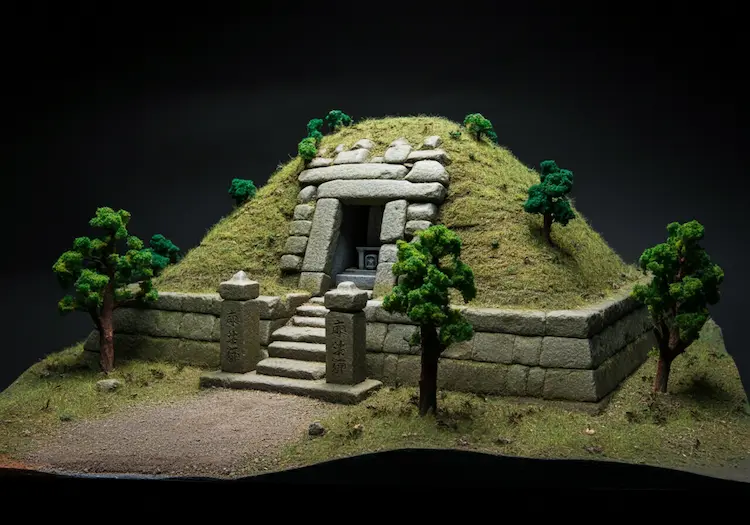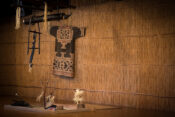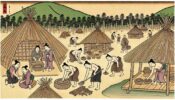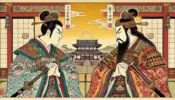Unearthing Nara’s Ancient Past – The Kofun Era
Nara Prefecture holds a special place in Japan’s history as the heart of the Kofun era (circa 3rd to 6th century). This period, named after the large burial mounds known as “kofun,” marks the emergence of centralized power in Japan. With its iconic keyhole-shaped tombs and intricate burial traditions, Nara’s landscape became the stage for the formation of the Yamato Kingdom, the precursor to Japan’s imperial lineage. Join us as we uncover the secrets of this fascinating era, which helped lay the foundation of Japan’s cultural and political identity.
The Beginning of the Kofun Era
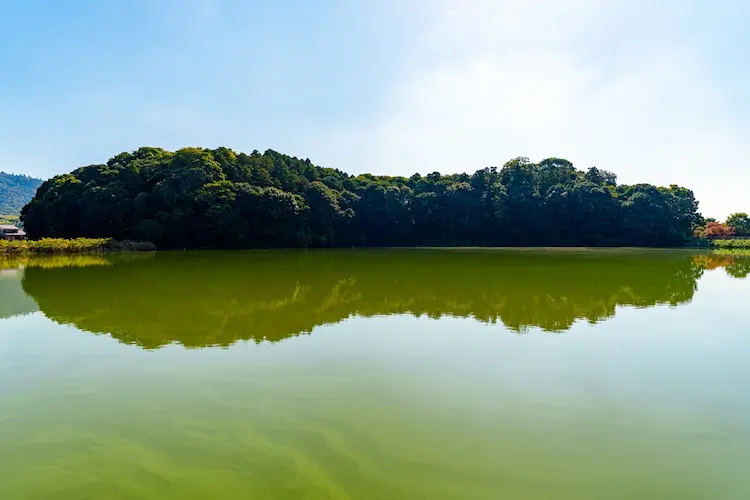
The Kofun era signified a major turning point in Japanese history, marking the rise of powerful local rulers and the beginning of more complex social and political systems.
- The Rise of the Yamato Kingdom: Around the 3rd century, regional chieftains began to consolidate power, eventually giving rise to the Yamato Kingdom, the first recognized centralized authority in Japan. The Nara Basin, with its fertile land and strategic location, was ideal for the Yamato rulers to establish their power base. The centralization of power allowed the Yamato Kingdom to begin forming alliances and asserting influence over neighboring regions, which is reflected in the large scale and ambitious construction of kofun throughout Nara.
- The Spread of Kofun Culture: The Kofun era is characterized by the construction of large earthen mounds, known as kofun, used as burial sites for the elite. The most iconic of these is the keyhole-shaped kofun, called “zenpokoenfun.” These burial mounds could be up to several hundred meters in length and were constructed with impressive precision, symbolizing the ruler’s authority. The sheer size of these kofun, often surrounded by moats, was designed to be a visible representation of the deceased’s status and power, showcasing the shift towards more hierarchical societies.
Nara’s Famous Kofun
Nara Prefecture is home to some of the most historically significant kofun in Japan. These ancient mounds are more than just burial sites; they are monuments that tell us about the political power, culture, and technological advancement of early Japan.
- Hashihaka Kofun: Stretching over 280 meters in length, Hashihaka Kofun is one of the most impressive burial mounds from the Kofun period and is believed by some scholars to be the final resting place of Queen Himiko, a legendary shaman queen of the Yamatai Kingdom. Archaeological studies have uncovered a variety of artifacts, including bronze mirrors and iron tools, which indicate the high social status of the person buried within. The association of Hashihaka Kofun with Himiko ties it to some of the earliest recorded history in Japan, blending legend with tangible archaeological evidence.
- Emperor’s Mausoleum Tombs: Scattered across Nara, there are numerous kofun that serve as the burial sites of early emperors and influential leaders. These tombs are often large keyhole-shaped mounds and provide insight into the hierarchical nature of early Japanese society. The size of these tombs and the elaborate items buried with the deceased—including weaponry, mirrors, and jewelry—reflect the evolving status and power of the ruling elite during this period.
- Makimuku Ruins: The Makimuku ruins, located at the base of Mount Miwa, are thought to be closely linked to the early Yamato Kingdom. This site has revealed a great deal about the sociopolitical structure of early Japan, suggesting that it may have been the birthplace of the Yamato state. The discovery of large buildings, pottery, and imported goods points to an organized society with connections to other parts of Asia, emphasizing Nara’s role as a cradle of Japanese civilization.
Inside the Kofun: Burial Traditions and Treasures
The interiors of kofun provide a rich understanding of the burial practices and values of Japan’s early leaders. These mounds were constructed not only to honor the deceased but also to demonstrate their continued influence even after death.
- Stone Chambers and Burial Goods: Many kofun contain elaborately built stone chambers, designed to protect the remains of the interred for eternity. The burial goods found inside are often symbols of the deceased’s status and power. Items such as bronze mirrors—used for both ritual and status—jade beads, iron tools, and weaponry were buried alongside the dead. These artifacts provide crucial insights into the trade networks of the time; for example, bronze mirrors are believed to have been imported from the Asian mainland, illustrating the extensive connections that the Yamato Kingdom had with Korea and China.
- Symbol of Power: The grandeur of a kofun was directly proportional to the power of the person buried within it. The largest kofun, such as the Daisenryo Kofun (believed to be the tomb of Emperor Nintoku, though located outside of Nara), served as monumental symbols of authority, meant to inspire awe among the living and remind them of the deceased ruler’s enduring influence. The design and construction of these kofun required immense labor, indicating a sophisticated social structure capable of organizing and supporting large-scale projects.
Daily Life and Culture During the Kofun Era
The Kofun era wasn’t just about grand tombs and powerful leaders; it was also a time of significant cultural and technological advancements that shaped the daily lives of the people living in Nara.
- Agricultural Progress: The spread of iron tools during the Kofun period revolutionized agriculture. The introduction of iron plows and sickles allowed for more efficient cultivation of rice, which led to increased agricultural productivity. With surplus food, populations began to grow, leading to the expansion of villages and the development of more complex social hierarchies. The Nara Basin, with its fertile land and ample water supply, became a hub for agricultural innovation.
- Diplomatic Ties and Cultural Exchange: Trade and cultural exchange flourished during this era. Artifacts found within kofun, such as bronze mirrors and iron weapons, point to an active exchange with the Korean Peninsula and China. This period also saw the introduction of advanced metalworking techniques, which contributed to improvements in tools, weaponry, and ceremonial items. The influence from the mainland brought new ideas that enriched local culture, blending indigenous practices with foreign innovations to create a unique cultural identity.
Nara’s Kofun and Their Influence on Later Eras
The legacy of the Kofun era laid the foundation for the rich historical and cultural landscape of Nara that flourished in subsequent centuries.
- Transition to the Nara Period: The consolidation of power by the Yamato rulers during the Kofun era set the stage for the later establishment of a centralized government during the Nara period (710-794). The political systems and alliances that began to take shape during the Kofun era evolved into more structured forms of governance, eventually leading to the creation of Japan’s first permanent capital in Nara.
- Cultural Heritage: Today, many of Nara’s kofun are preserved as historical sites, serving as a link between modern Japan and its ancient past. The kofun remind us of the origins of the Japanese imperial system and the cultural shifts that occurred during this formative period. The connection between Nara’s kofun and the UNESCO World Heritage Site of the Mozu-Furuichi Kofun Group highlights the continued cultural importance of these ancient tombs, drawing visitors and scholars from around the world.
Modern Connections to the Kofun Era
Nara’s ancient history is far from forgotten. Today, the kofun are celebrated as part of Japan’s rich cultural heritage, offering unique insights into the country’s origins.
- Must-Visit Sites: Visitors to Nara can explore the impressive Hashihaka Kofun, walk through the grounds of the Makimuku ruins, or visit the Nara Prefecture Archaeological Institute, which offers in-depth exhibitions about the kofun period. These sites provide a tangible connection to Japan’s ancient history and allow visitors to appreciate the scale and craftsmanship of the kofun builders.
- Interactive Experiences: Nara also offers hands-on experiences for those who wish to immerse themselves in the culture of the Kofun era. Workshops on traditional burial mound construction techniques, as well as pottery-making sessions using Kofun-era styles, provide an engaging way for visitors to connect with the past. These activities help bring history to life, offering a glimpse into the craftsmanship and daily lives of the people who lived in ancient Nara.
Conclusion: A Journey to the Roots of Japan
The Kofun era is a foundational chapter in Japanese history, one that continues to inspire awe and curiosity. By visiting Nara, you not only witness the grandeur of ancient tombs but also connect deeply with the origins of Japan’s cultural and political heritage. The kofun are more than just burial mounds—they are symbols of the early power structures, cultural exchanges, and the enduring legacy of Japan’s formative centuries. Step into the past and let the stories of sleeping kings awaken your imagination, as you explore the land where Japan’s ancient roots still thrive today.
